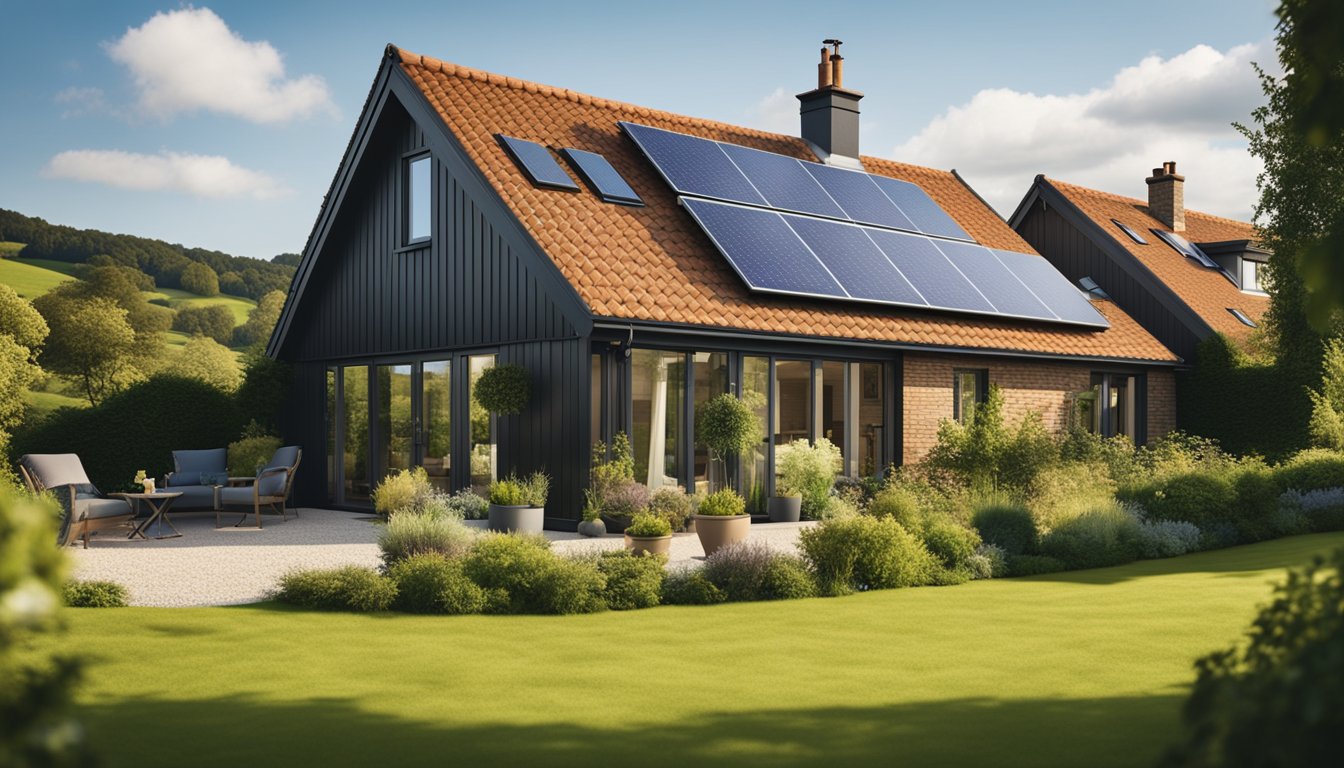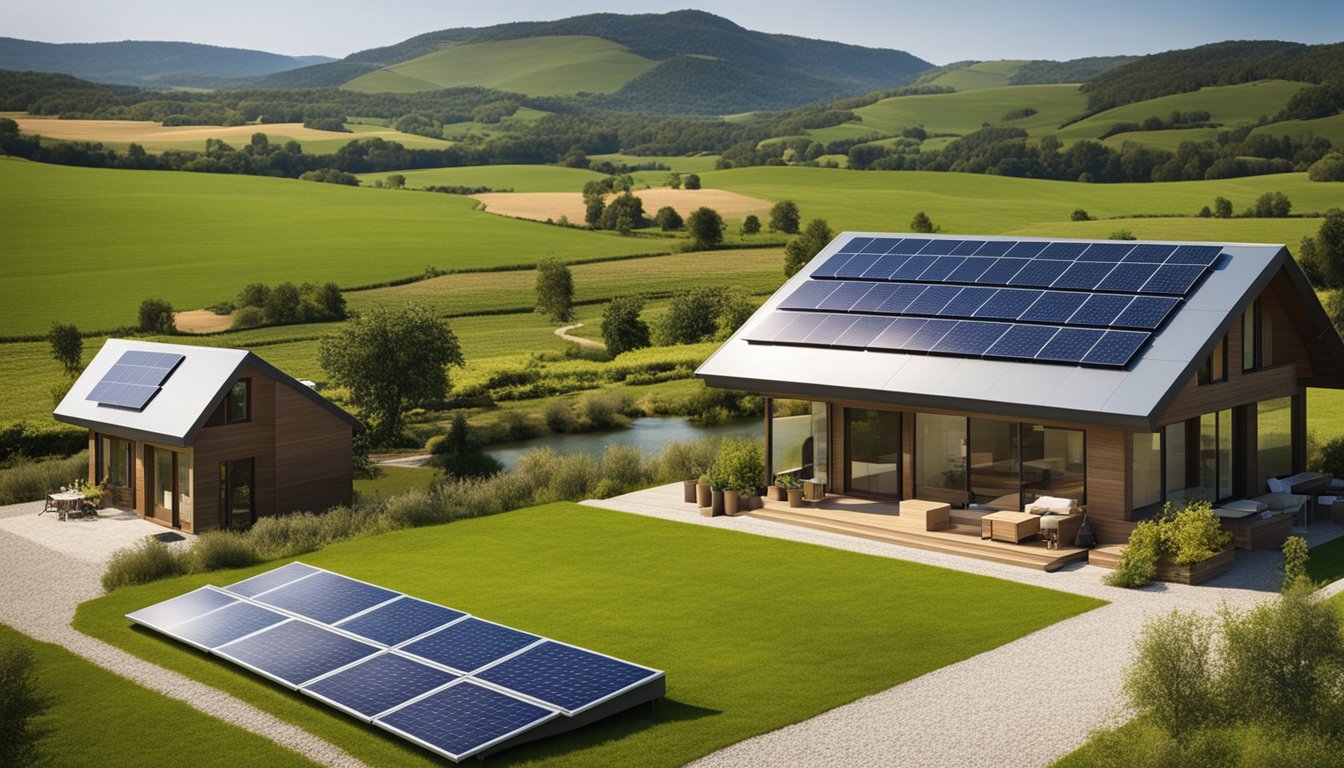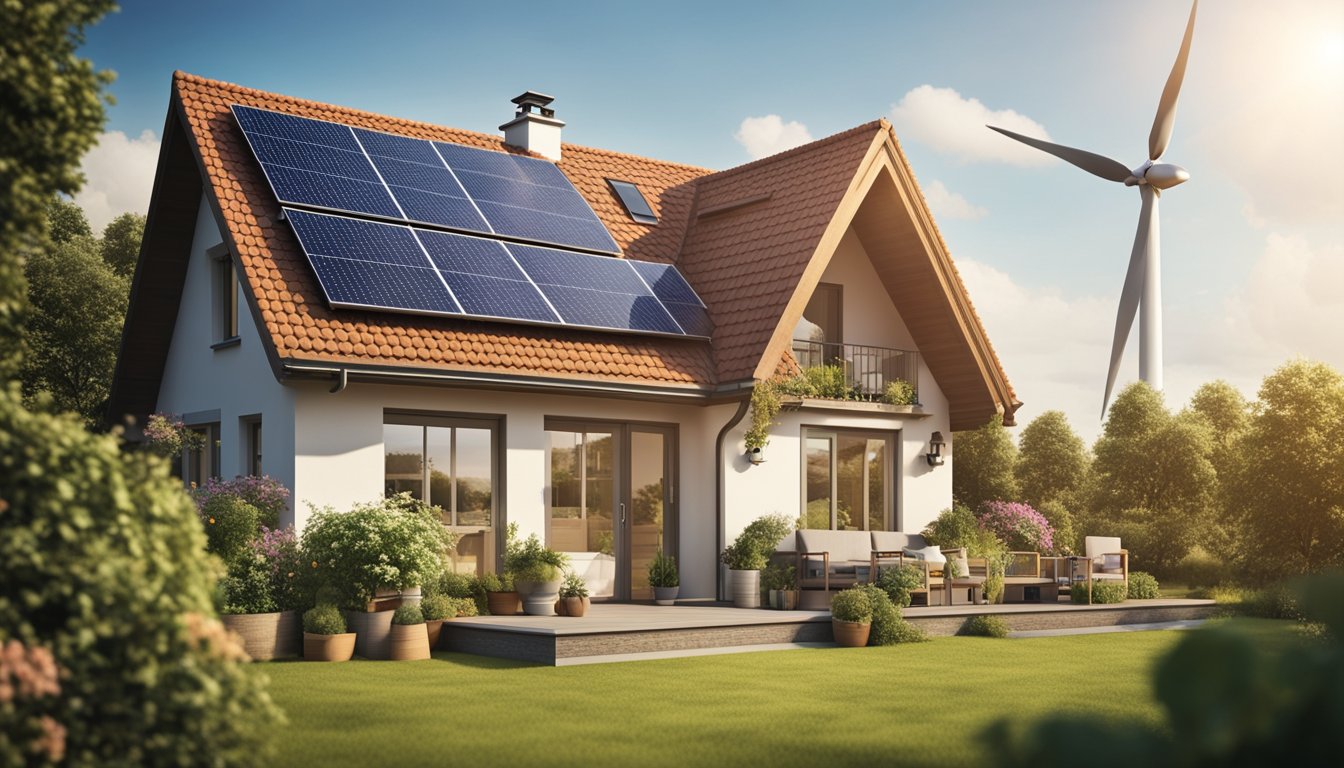Late updated: 08 Nov 2024 08:11
Written by: Oliver Bennett
Smart Energy Solutions For UK Countryside Dwellings: Sustainable Living Innovations
Exploring smart energy solutions for UK countryside dwellings opens up a world of sustainable opportunities. Amid a backdrop of expansive rural landscapes, many areas remain underutilised in the scope of renewable energy potential. Integrating smart technologies ensures not only enhanced energy efficiency but also substantial reductions in carbon emissions, aligning with the UK’s net zero goals.

Our countryside is primed for an energy revolution. The implementation of smart grids and renewable resources tailored to rural living can drastically cut energy costs. These solutions are not just future-proofing homes; they are redefining how energy is managed and consumed in less urbanised areas.
Access to innovative energy technologies means rural communities can lead in sustainable energy practices. Smart systems foster greater flexibility in energy use, allowing us to meet the unique demands of countryside living effectively. By adopting these practices, we can create a resilient, low-carbon future for our rural dwellings.
Key Takeaways
- Smart energy solutions enhance efficiency and reduce emissions.
- Rural areas can significantly lower energy costs through innovative technologies.
- Integrating smart systems aids a sustainable and low-carbon rural future.
Understanding Energy Demand and Resources in UK Countryside Dwellings

In the UK countryside, energy systems face unique challenges and opportunities involving a mix of traditional and modern energy resources. By examining the demand and potential for renewable energy, we can better address the needs of rural communities.
Mapping the Energy Landscape
We often find that energy consumption in countryside dwellings differs significantly from urban areas. Rural homes tend to be older and less energy-efficient, frequently relying on fossil fuels such as oil and coal for heating.
Limited access to the national gas grid further complicates energy delivery. Electricity usage patterns in rural areas can be uneven due to the varied needs of agricultural and residential applications.
Here, energy security becomes vital, with a strong emphasis on how we integrate new energy technologies. Efficient mapping of existing infrastructure and usage is crucial. Hydrogen and other innovative energy sources hold promise as we seek ways to transform the rural energy landscape.
Renewable Energy Potential and Utilisation
Countryside dwellings offer significant potential for the adoption of renewable energy sources. Solar, wind, and biomass energy can be effectively harnessed in these areas. Land availability often allows for larger installations, making the countryside particularly suitable for these technologies.
Wind turbines, for instance, could be strategically placed to benefit from open spaces, while solar panels can be installed on farm buildings and home rooftops. Sustainable solutions such as these not only reduce carbon emissions but also support local economies by creating green jobs.
Despite their promise, the uptake of renewables faces barriers. These may include the initial capital required or community acceptance. Yet, the potential benefits to energy independence and climate change mitigation remain significant.
Challenges and Opportunities for Countryside Energy Systems
The transition to more sustainable energy systems in rural areas presents both challenges and opportunities. Infrastructure limits, such as ageing transmission lines, can impede progress. There can also be resistance to change from residents accustomed to traditional systems.
Nevertheless, there are substantial opportunities for growth in the energy sector. New business models, like community-owned energy schemes, are emerging. These could foster local involvement and investment in greener energy solutions.
By focusing on the development of reliable, renewable, and locally managed energy systems, we can create a future where rural communities are resilient and sustainable. This localisation of energy generation can further strengthen our energy security and reduce reliance on traditional fossil fuels.
Innovating for a Sustainable Future

In transforming UK countryside dwellings, innovation plays a critical role. Smart local energy systems, investment in eco-friendly technologies, and robust policy frameworks are indispensable in shaping a sustainable future.
Smart Local Energy Systems and Flexibility
We recognise the profound impact of smart local energy systems on achieving sustainability. By integrating renewable energy solutions like solar panels and biomass heating systems, these systems contribute significantly to carbon footprint reduction. The flexibility they offer can regulate electricity demand efficiently.
Combined with energy storage solutions, they ensure consistent energy supply, particularly in areas with erratic weather conditions. Smart meters can further enhance these systems, providing intuitive insights into energy consumption. Together, they lay the groundwork for decarbonisation and achieving net zero emissions in rural communities.
Investment in Eco-Friendly Technologies
Promoting sustainable living necessitates focused investments. With support from entities like UK Research and Innovation and Innovate UK, the transition to green energy becomes fiscally viable. Solar energy and biomass heating stand out as promising technologies for countryside homes.
Aligning investment with innovative business models ensures financial viability. It also reduces energy bills by minimising reliance on traditional energy sources. Such investments underpin our journey towards a resilient, decarbonised energy network, fostering a cleaner future.
Role of Policy and Regulation
Clear policy directives are vital for sustaining progress. In collaboration with Ofgem, the government has developed frameworks like the Smart Systems and Flexibility Plan. These policies incentivise adoption of renewable energy solutions and enforce standards for net zero delivery.
By creating favourable conditions for innovations, policies help the widespread implementation of smart technologies and clean energy practices. Effective regulation sustains momentum, ensuring that the energy systems transition remains aligned with national and global sustainability goals. Through these cohesive efforts, we aim to cultivate an environment that champions innovation for a sustainable future.
Frequently Asked Questions

When discussing smart energy solutions for UK countryside dwellings, we focus on renewable energy systems, carbon footprint reduction, available grants, and integration challenges. We aim to provide insights into cost-effective transitions and practical solutions for remote locations.
What are the best renewable energy systems for rural homes in the UK?
In rural UK settings, solar panels, wind turbines, and biomass heating systems are particularly effective. These technologies have been proven to significantly reduce emissions, making them ideal choices. Solar panels harness the plentiful sunlight, while wind turbines and biomass systems offer reliable alternatives when solar energy is insufficient.
How can countryside dwellings in the UK effectively reduce their carbon footprint?
Eco-friendly insulation, energy-efficient appliances, and sustainable transportation are vital components of reducing the carbon footprint. Implementing water conservation measures and optimising resource use can further bolster sustainability. By integrating these elements, rural homes can significantly diminish their environmental impact.
What grants are available for implementing smart energy solutions in UK countryside residences?
Several grants support the adoption of smart energy systems, such as the Green Homes Grant and local council incentives. These financial aids often cover a portion of the costs for renewable energy installations and efficiency improvements, making the transition more accessible for rural homeowners.
What are the challenges of installing smart energy systems in remote UK areas, and how can they be overcome?
Challenges include logistical issues, grid connectivity concerns, and environmental regulations. To address these, we encourage collaboration with local authorities to ensure compliance and support. Utilising off-grid systems and innovative technologies can also help bypass some of these obstacles, ensuring a smoother installation process.
How do smart energy management technologies integrate with existing infrastructure in UK rural homes?
Smart energy technologies can seamlessly connect with current home infrastructure through available smart grid solutions. By incorporating smart meters and energy-efficient appliances, rural homes can optimise energy usage and monitor consumption. This integration promotes an efficient and sustainable lifestyle.
What is the most cost-effective approach to transition to smart energy solutions for homes in the UK countryside?
A phased approach, starting with simple energy efficiency measures, is often the most affordable. Investing in small-scale renewable systems and gradually upgrading to larger installations as budgets allow ensures financial feasibility. Additionally, taking advantage of government incentives can significantly reduce costs associated with these transitions.
